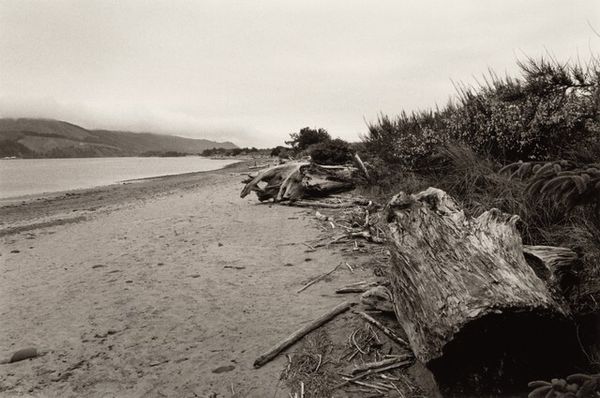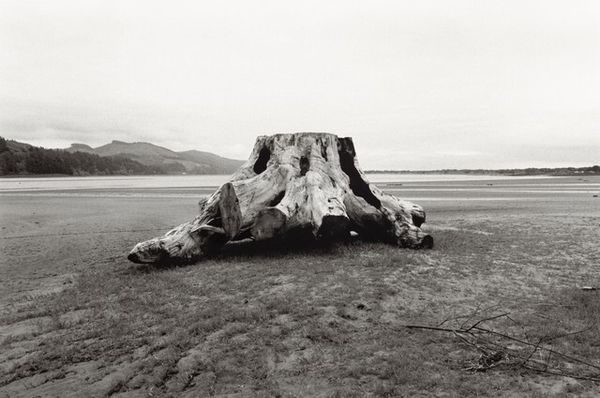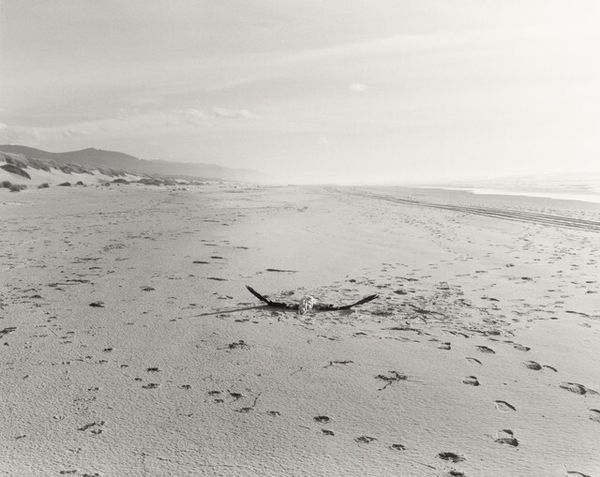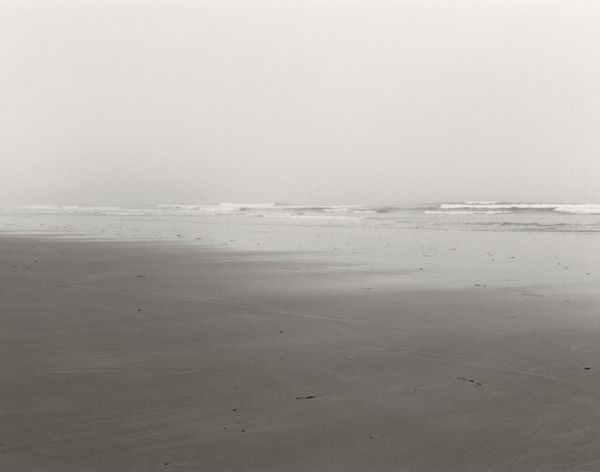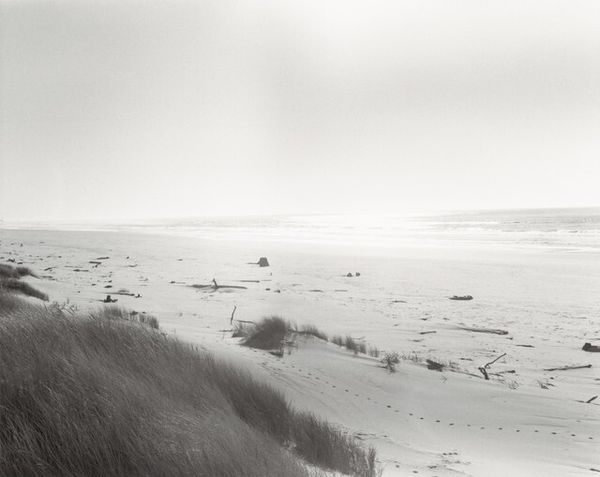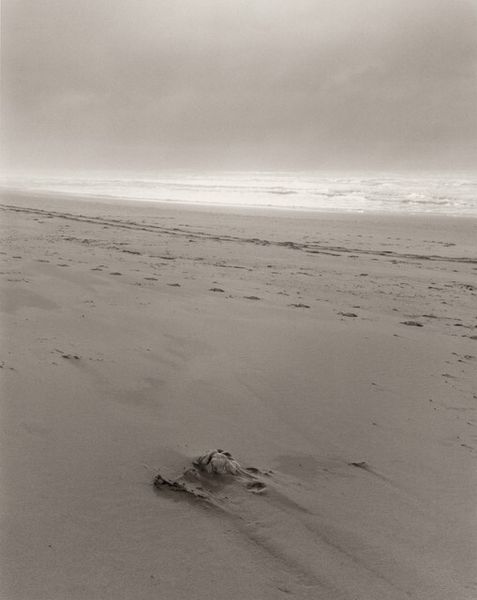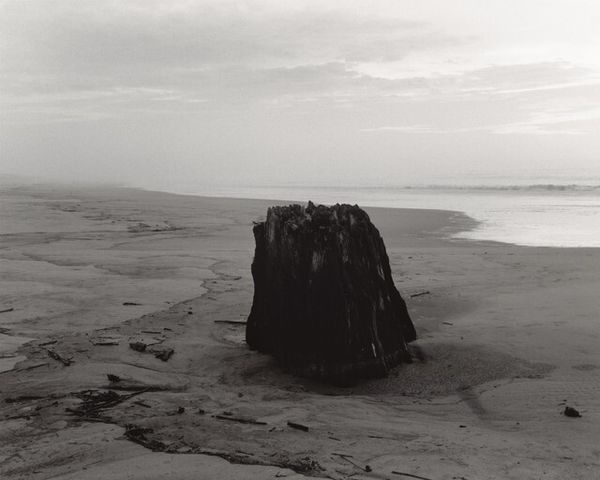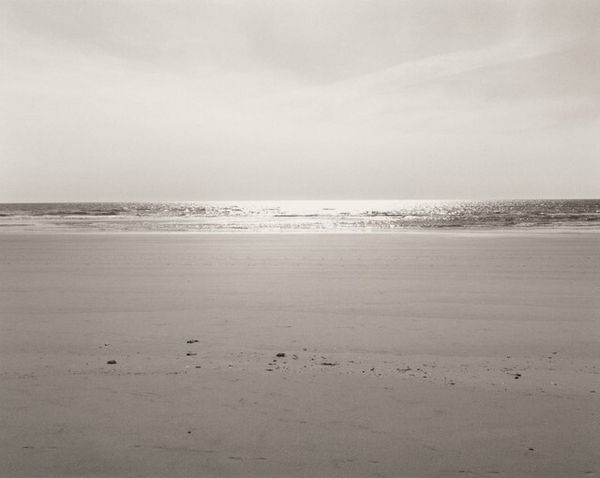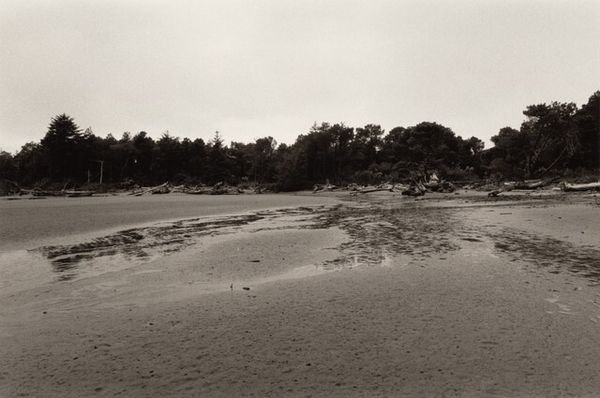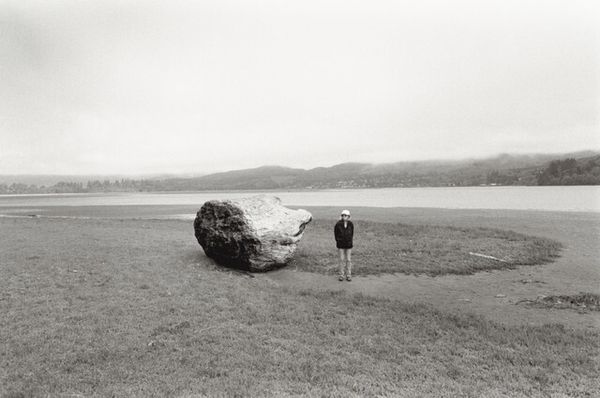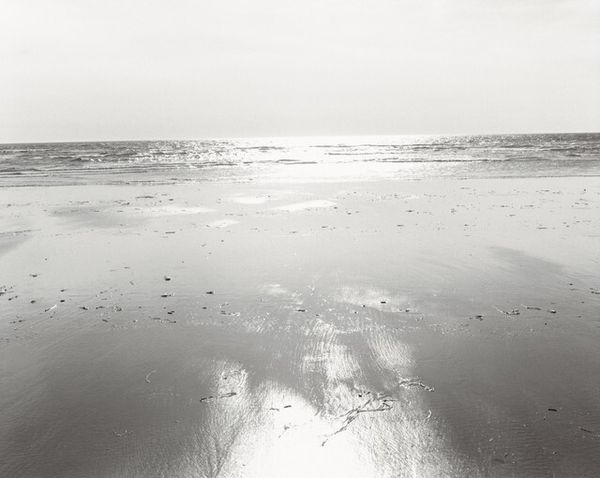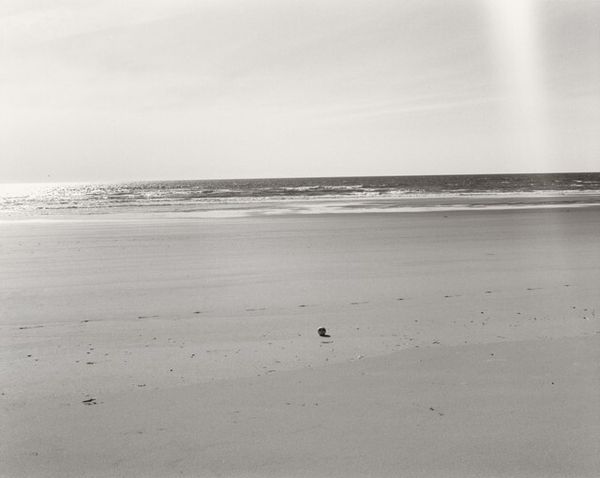
photography, gelatin-silver-print
#
still-life-photography
#
contemporary
#
black and white photography
#
landscape
#
black and white format
#
photography
#
black and white
#
gelatin-silver-print
#
monochrome photography
#
monochrome
#
skyscape
#
realism
#
monochrome
Dimensions: image: 19.69 × 29.85 cm (7 3/4 × 11 3/4 in.) sheet: 27.94 × 35.56 cm (11 × 14 in.)
Copyright: National Gallery of Art: CC0 1.0
Editor: This is Robert Adams’ "The River's Edge," taken in 2015. It’s a gelatin silver print and the monochrome really sets a quiet, contemplative mood. What do you see in this piece? Curator: I see a meditation on cycles of time. The bleached driftwood, almost skeletal, evokes a sense of mortality against the backdrop of enduring natural forms—the river, the distant mountains. Notice the almost archetypal stillness, and ask yourself what emotional truth it holds. Editor: It feels like a contrast between something very old and something permanent. Curator: Exactly. And what visual elements contribute to that feeling? Consider how the arrangement of the driftwood relates to those lines of pebbles leading to the river... Editor: They seem like markers, almost like pathways or stepping stones across time, like you are supposed to follow them to someplace. Curator: Precisely. Think of the enduring symbolic weight of water and stone: sources of life and resilience. Adams is positioning our moment as participants in this cycle, witnesses of decay and regeneration. Do you notice a connection to older Vanitas traditions here? Editor: Now that you mention it, the driftwood almost resembles a skull, reminding us of our own mortality. I never would have noticed it. Curator: It’s subtle, but potent. Ultimately, this image operates on multiple levels, inviting us to contemplate not just the scene before us, but also our place within the grander scheme of existence. Editor: I see that now. The landscape is not just a scene, but an emblem, heavy with symbolic association. Thanks, I will consider those older symbolic meanings going forward.
Comments
No comments
Be the first to comment and join the conversation on the ultimate creative platform.
